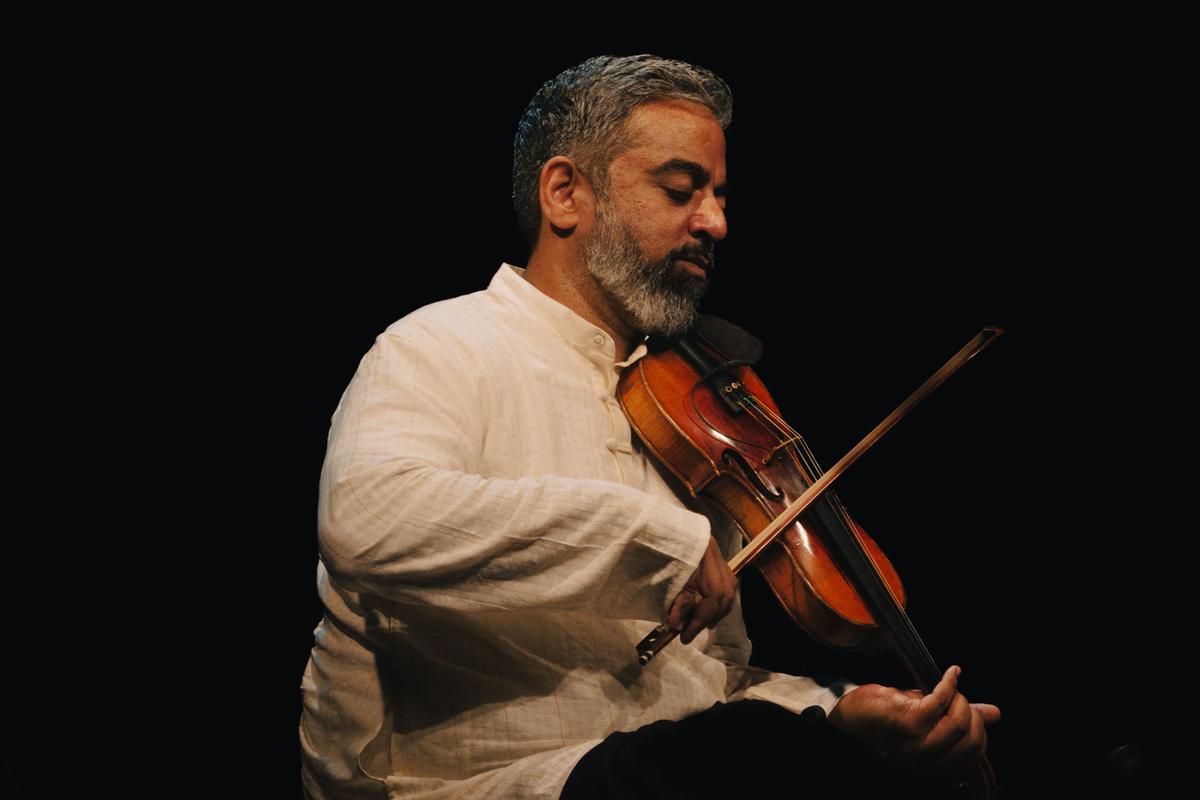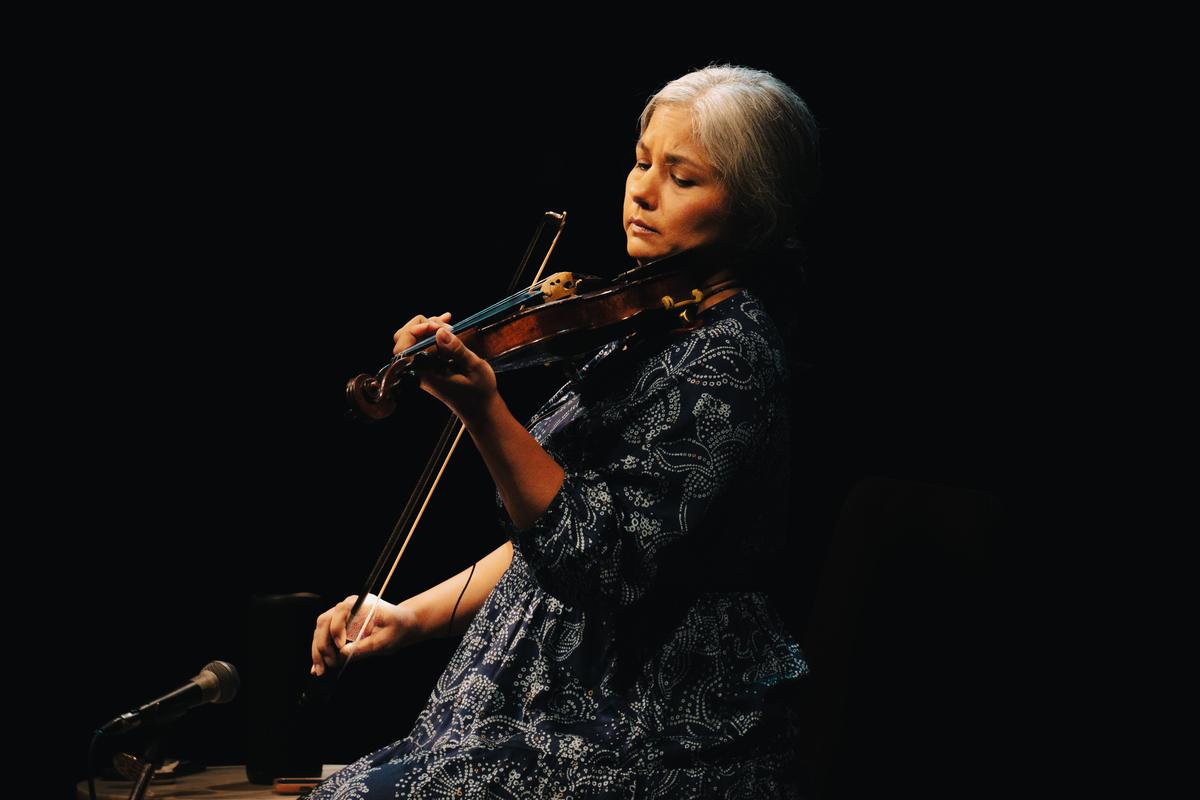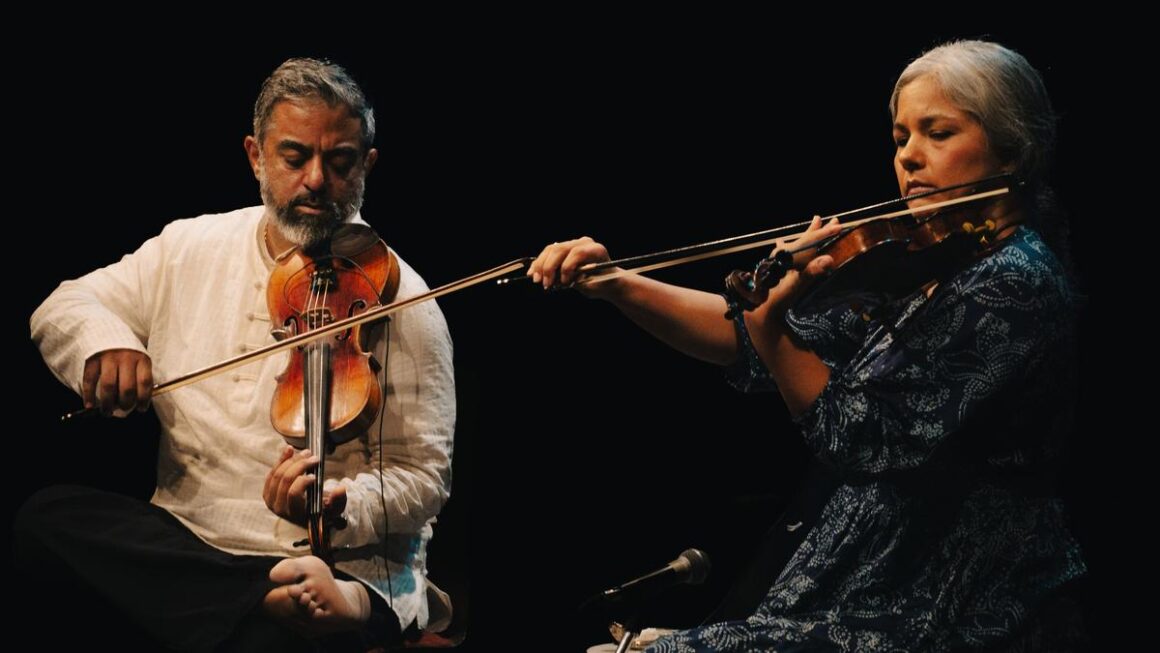
Arun Ramamurthy and Trina Basu’s music didn’t just allow for new visualisations of ancient musical systems, but pointed to the potential of music as a whole. The duo performed recently at the Bangalore International Centre.
| Photo Credit: Gayatri Sreekesh
The visual story of ‘Nakshatra’ – a concert performed at Bangalore International Centre by violin duo Arun Ramamurthy and Trina Basu, reflected two musicians seated side by side on a gently lit stage, the aural narrative spanned a richly detailed, living canvas of music that could be as large as you wanted it to be. The music of Arun and Trina produced a now-you-see-them-now-you-don’t effect on their individual playing styles and musical backgrounds.
The duo brought their music from Brooklyn (New York) to Bengaluru while on a visit to India with their family. Touring Kolkata and Bengaluru in their first ever Indian concert series as a violin duo, they presented snippets from their first album, among other musical pieces. Their music didn’t just allow for brand new visualisations of ancient musical systems, it pointed to the potential of music as a whole, if music education were to become as institutionalised in India as it is in the West.

Arun and Trina began their concert with a composition dedicated to Lenapehoking, where the indigenous people of the region had lived in sync with Nature, before colonisation.
| Photo Credit:
Gayatri Sreekesh
The concert began with a musical piece dedicated to Lenapehoking (Lenape Land) or Prospect Park in New York, where the indigenous people of the region had lived in sync with Nature, before colonisation. Prospect Park, Trina said, had provided “great refuge during the pandemic, when the only sounds were of birds and ambulances.” Set to the popular raga Abheri, the composition was rooted in important ecological and ethical concerns that would be a recurring concert motif.
Their next piece ‘Tempest’ carried the imprint of clarity that comes after a storm. Woven of ragas Gowri Manohari and Vachaspati, for me, it raised questions on how music sourced from such disparate spaces can sound so unified. ‘Migration,’ in Mohanam raga, was inspired by the journey their families had taken from Bengaluru and erstwhile Calcutta to the U.S.
The next two pieces probed Nature’s elements and erratic weather patterns . While progressive notes from raga Hemavati conjured up spirals of the Fibonacci sequence, the duo’s harmonic arrangement of ‘Sri Kamalambike’ in Sree raga highlighted how SRMP and MPNS when played together can become a compounded musical treat. The duo’s reimagining of this Muthuswami Dikshitar composition brought to mind the history of the violin as a once purely western instrument, credited with being adapted to Carnatic music by his brother Baluswami Dikshitar. The shared musical vocabulary of Arun and Trina took that adaptation to new heights. The subsequent musical pieces were also informed by American folk, Carnatic, Jazz and film music, among other genres. The duo’s style of deep listening and making space for the other’s expression opened up myriad shades of music.

Arun Ramamurthy.
| Photo Credit:
Gayatri Sreekesh
Having been introduced to each other in 2007 by Arun’s Carnatic music teacher, Mysore Manjunath (after Trina had spent a year training in India), Arun and Trina played together in a local Carnatic ensemble, Akshara, shortly after. A “shared musical chemistry,” as Trina puts it, led to two years of “practicing together, sharing stories, musical ideas and approaches to the instrument,” Arun says. They started “composing and performing together as a duo around 2012,” he adds. Their intent, Trina says, is to “make music, unapologetically from the heart and stretch creative possibilities,” while Arun adds that they “hope to make music that addresses real world issues.”

Trina Basu.
| Photo Credit:
Gayatri Sreekesh
“Experimenting with elements and techniques that exist in the different violin traditions (Indian raga/tala, western chamber music, counterpoint, harmony, fiddle/folk) has given us an expansive palette of colours to compose with. That is a great win for us!” says Trina. Arun is inspired by the “feeling of letting go and letting the subconscious take over” in their musical collaboration that he sees as an attempt to “look inward and make music that is meaningful” to them and to audiences.
Both professional musicians with independent careers, they use their home as “an office, rehearsal, teaching studio and family living space,” Arun says, daily learning to negotiate “challenges associated with partnership and parenting.” Trina says they cope by trying to “stay focused, organised and accepting of the pace” at which their work evolves. Yet, none of these challenges were audible in their music that allowed for different kinds of music to intimately converse without censure or judgment.
Published – September 11, 2024 03:06 pm IST


Leave a Reply